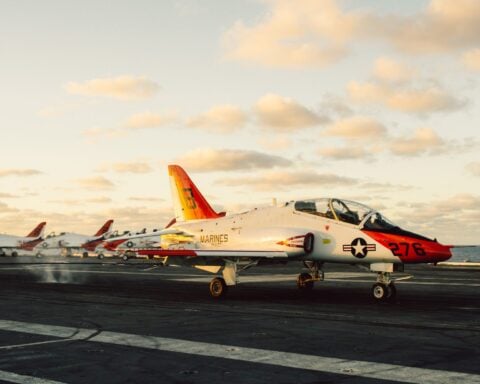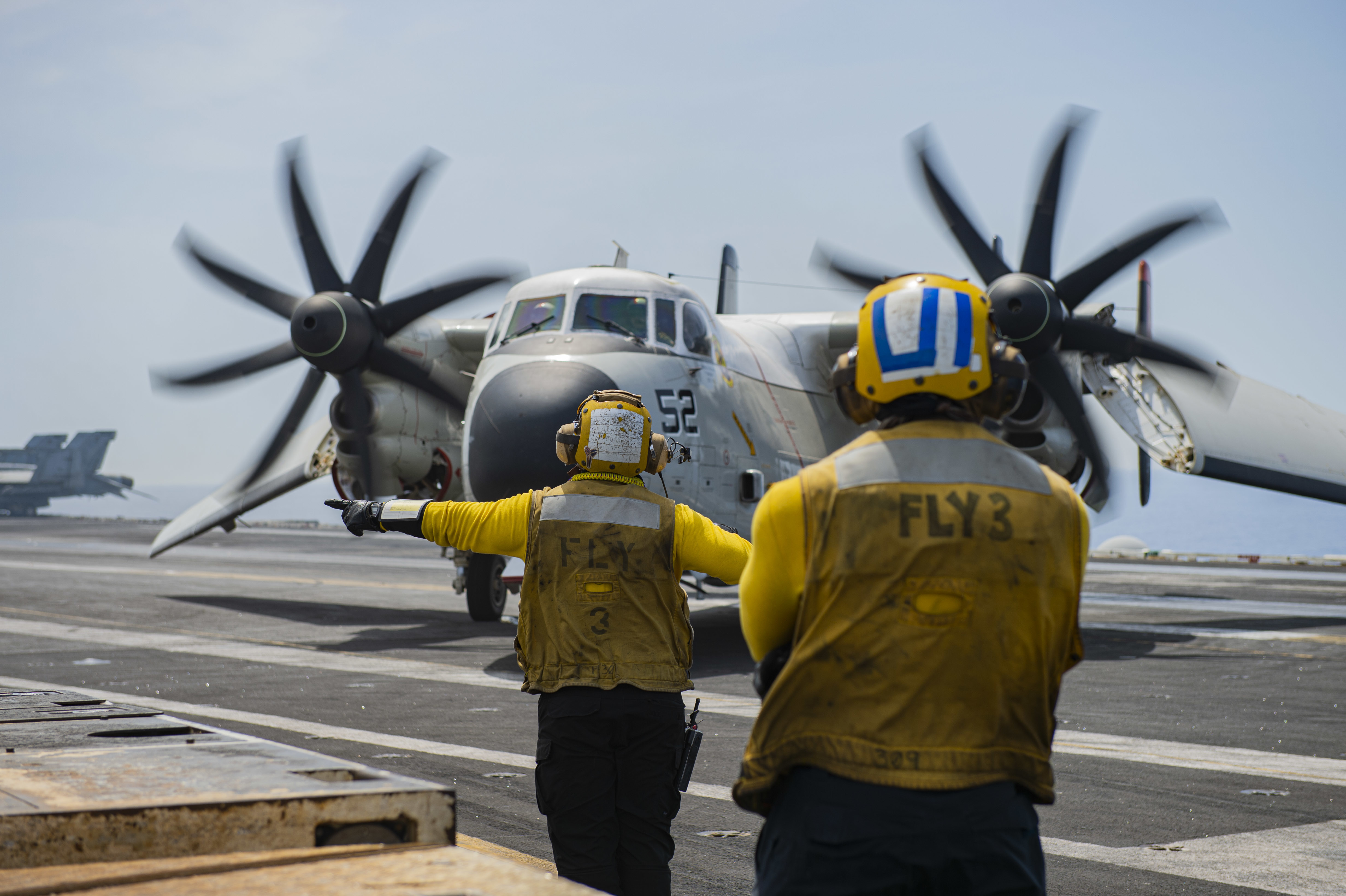Friday’s deployment of USS Freedom (LCS 1) will revive a tradition of camouflaging warships. Outside of smaller patrol boats, the U.S. largely abandoned elaborate color schemes and stuck with haze gray.
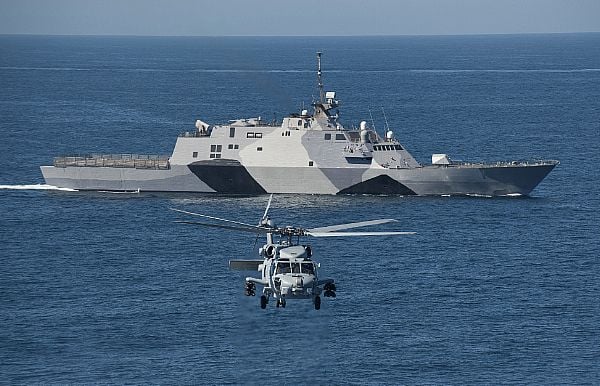
But with the advent of the Littoral Combat Ship, a combatant designed to operate close to shore, the concept has returned. To put Freedom’s new look in context, the following are some examples of patterns from the past.
Birth of ‘Dazzle’
At the outbreak of World War I, navies struggled how to conceal their ships on the open seas. Painting vessels grey helped reduce visibility, but it was difficult to consistently blend with ever-changing environments and weather conditions. Prominent trails of smoke and wake also left ships vulnerable to being identified by enemies.
In 1917, the British Royal Navy pioneered the “Dazzle” camouflage paint scheme which often consisted of bold stripes and bright colors. The patterns were not intended to hide the ship, but rather to disrupt the outline so that size, range, speed and heading would be difficult to determine – preventing the enemy from accurately targeting the vessel. The United States was one of several nations to adopt the practice and experiment with different patterns through the end of World War II. “Dazzle” schemes largely faded from use because there was no clear evidence of their effectiveness, especially against technological advances in radar and rangefinders. “Dazzle” was however credited with boosting morale of crews who took pride in the unique and intimidating appearance of their ship.
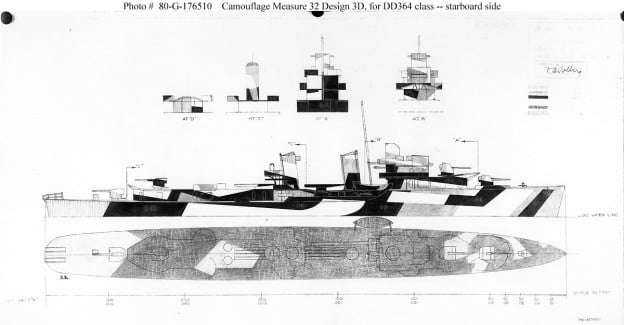

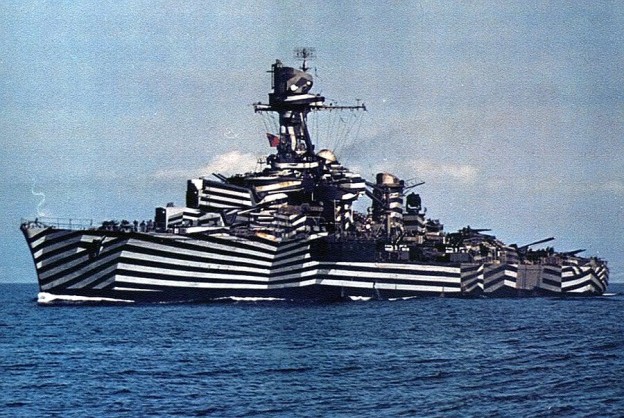
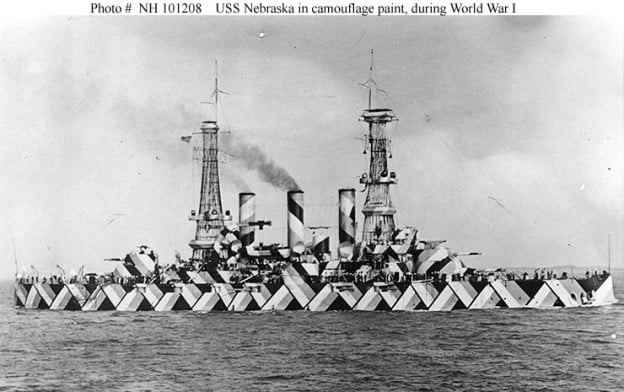
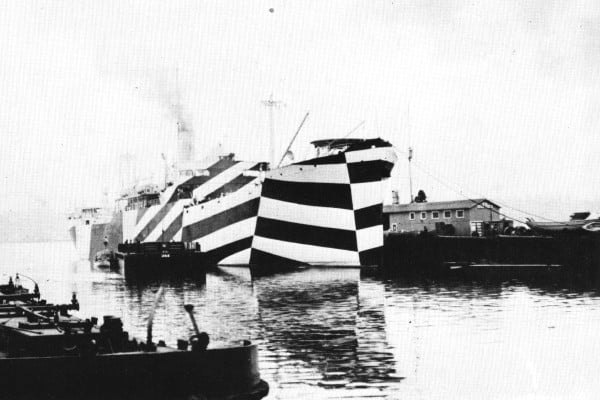
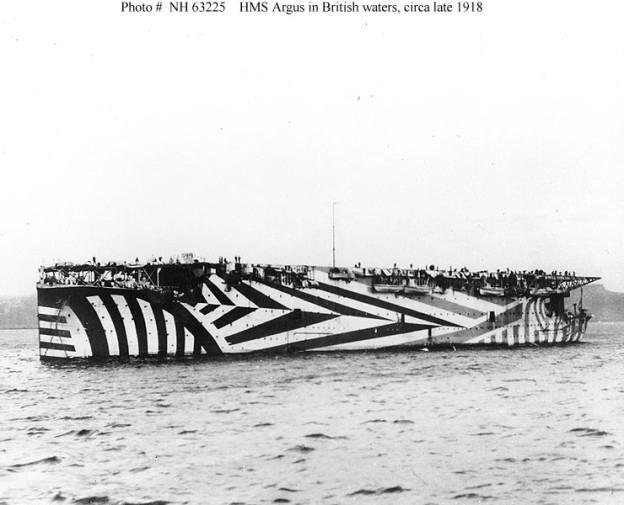
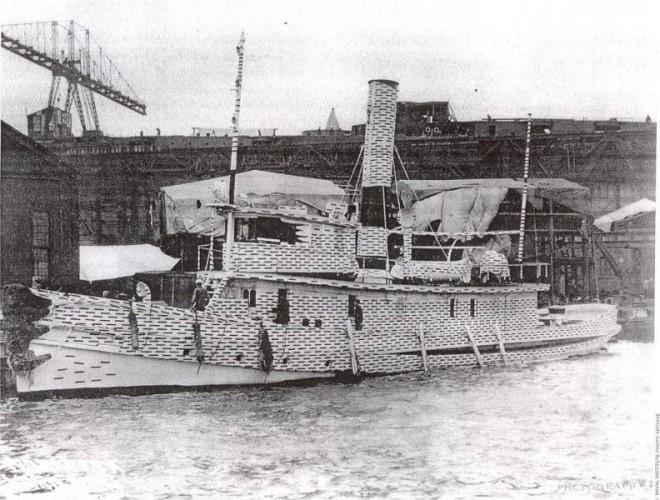
- Steam tug USS Narkeeta operating in New York in 1917
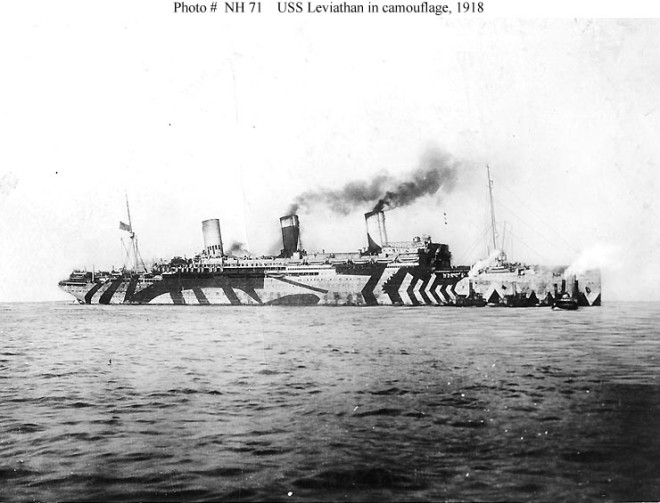
An ocean liner converted into a troop ship, the USS Leviathan in 1918 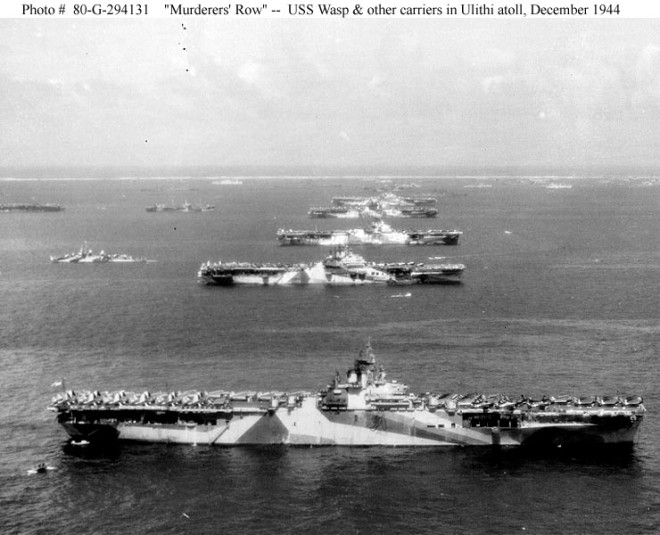
“Murders’ Row” – USS Wasp, USS Yorktown, USS Hornet, USS Hancock and USS Ticonderoga in 1944 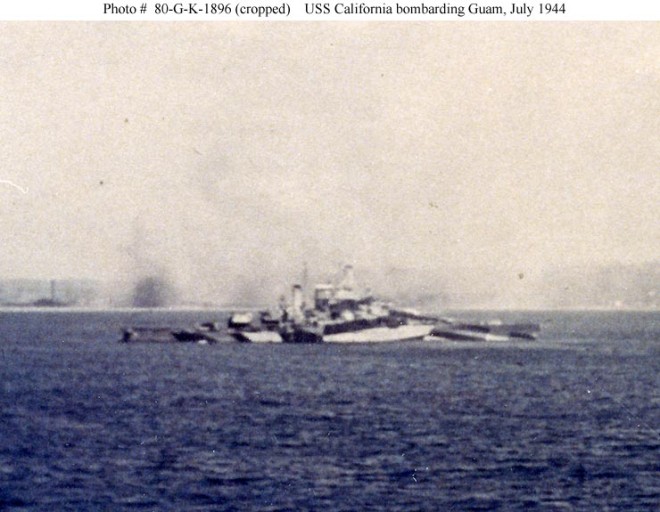
USS California bombarding Guam, July 1944 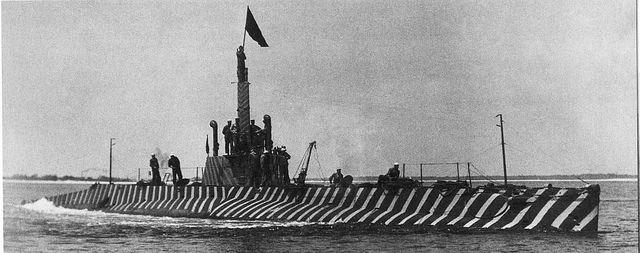
USS K-5 showing its stripes near Pensacola, FL in 1916




